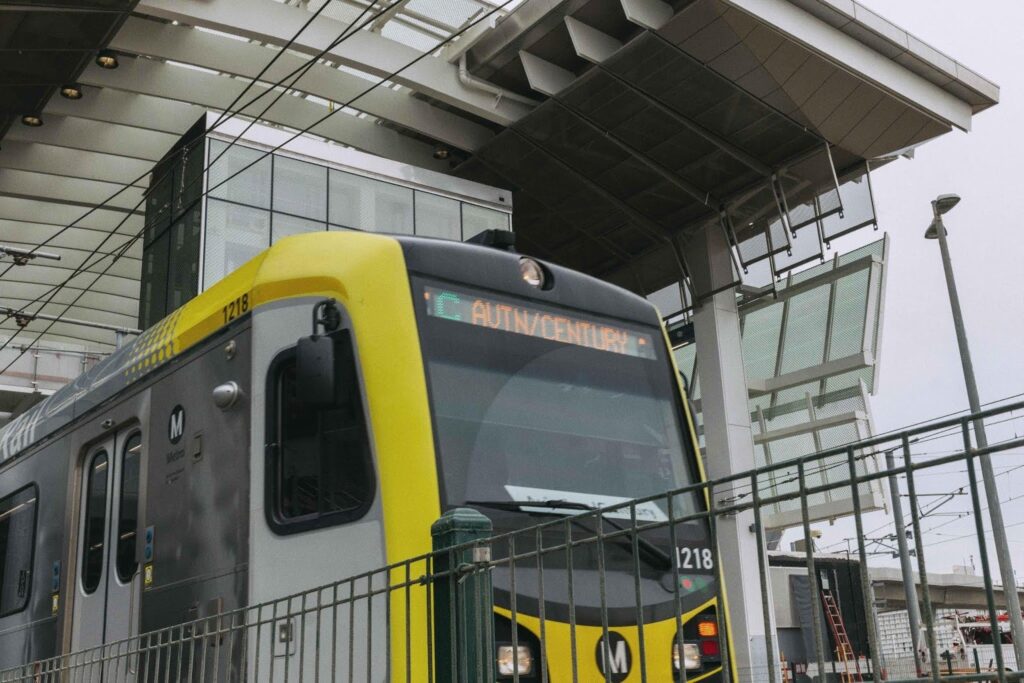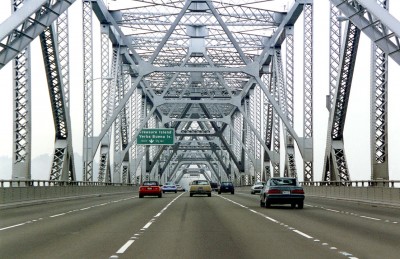
Bay Area bridge shutdown puts transportation network in the spotlight
 Even in the San Francisco Bay Area, a renowned transit hub with higher than average rates of walking, biking and transit ridership, more than 280,000 vehicles cross the San Francisco-Oakland Bay Bridge every day. It’s a critical artery connecting downtown San Francisco with the thousands of residents who live in Oakland and the surrounding suburbs.
Even in the San Francisco Bay Area, a renowned transit hub with higher than average rates of walking, biking and transit ridership, more than 280,000 vehicles cross the San Francisco-Oakland Bay Bridge every day. It’s a critical artery connecting downtown San Francisco with the thousands of residents who live in Oakland and the surrounding suburbs.
It is thus understandable that panic ensued after a part snapped off in high winds and fell onto the roadway, resulting in a complete shutdown of the Bay Bridge early Tuesday. Thankfully, though at least two vehicles either ran into or hit the fallen part, no injuries resulted. As of this morning, the bridge remains closed without a date certain for re-opening.
The Bay Bridge was last closed down over Labor Day weekend, during which engineers discovered an unexpected crack. This structural flaw nearly delayed the bridge from reopening on-time, but crews received the needed materials in just enough time for the post-weekend morning commute.
It was one of those last minute repair pieces that broke off Tuesday, although engineers could not say whether the Labor Day rush had anything to do with it. Heavy winds are another potential culprit — hardly an uncommon occurrence in the Bay Area, however.
Once the bridge was closed, the immediate focus shifted to the Wednesday morning commute. Prognosticators were predicting mass chaos and never-ending gridlock as far as the eye could see on Wednesday morning.
Officials with the BART subway system arranged for extra train cars and personnel to accommodate the expected surge in passengers, leading to a record day of ridership that crushed the previous high water mark. Ferry agencies across the Bay ramped up service and Amtrak is providing a shuttle. MUNI, AC Transit, and other local agencies also stepped up rates of service and frequency to meet the demand.
| “When the Bay Bridge closed we saw a 49 percent spike in transit use. Thank goodness we had that transit option there.” |
| – Federal Transit Adminstration Administrator Peter Rogoff today at the Rail~Volution Conference |
Despite similar predictions of chaos and gridlock, commuters, transit agencies and officials effectively coped with the collapse of a major overpass near the Bay Bridge in April 2007. Many drivers quickly developed alternate routes or shifted their schedule, BART was effective at expanding capacity and major thoroughfares were crowded, but not gridlocked.
Media accounts accounts for this week indicate Bay Area officials have handled the shutdown relatively smoothly, especially considering how many vehicles use this bridge every day. BART trains were filled to capacity and the Richmond-San Rafael and San Mateo-Hayward bridges — both adjacent to the Bay Bridge — were jammed with cars but still moving, albeit at a sluggish pace.
As far as we can tell, California Department of Transportation officials have been responsive and responsible about safety and structural integrity. It is important they be given the time to get this right.
But even if the time crunch during Labor Day weekend did not contribute to the problem, it should be cause for concern. In too many transportation projects, safety is shelved in favor of speed and grandeur. Part of the Bay Area’s ability to cope is the investment they’ve made in a variety of transportation options and modes. Which begs the question, how would metropolitan areas that lack these alternatives fare if a similar incident occurred?
Diversity of options isn’t just about cutting emissions or reducing fuel consumption. A complete network is one that can continue functioning when a few parts go down. A city dependent completely on cars and interstates (or 1 or 2 transit lines) is a vulnerable city.
Across America, children, seniors, the disabled and people who do not or cannot drive are at risk due to unsafe streets and crumbling sidewalks. We cannot afford to spend untold billions on new projects if we cannot keep old ones from crumbling. Including strong “fix-it first” language in the transportation bill re-authorization would ensure that existing roads and bridges get the upgrades they need to keep commuters and all users safe.
In addition, the Critical Asset Investment Program proposed in Chairman Oberstar’s transportation bill would create a substantial, dedicated funding stream for maintaining roads and bridges, preventing states from diverting those funds to more political popular highway expansion projects. This program would also require transit agencies to show how they are maintaining their systems and keeping them in “a state of good repair.”
The Bay Area will get through this. But the incident is a reminder that transportation policy cannot be a piecemeal, crisis-to-crisis endeavor.



